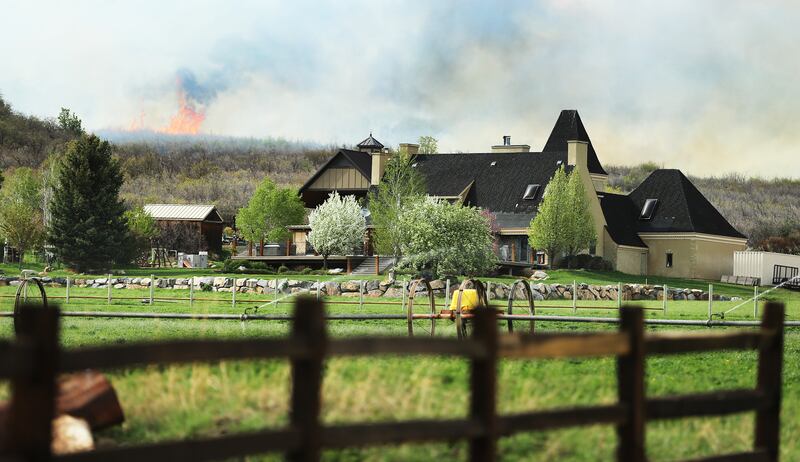SALT LAKE CITY — Lisa Bagley’s cabin narrowly escaped being destroyed in the Saddle Fire last week, so wildfires are an urgent concern for her, leaving her to feel vulnerable, helpless and worried.
She lives less than five minutes from the mouth of Millcreek Canyon, which has one way up, and one way down.
So when she combed through the provisions of Salt Lake County’s proposed general plan for the Wasatch canyons, her concerns grew.
“If Salt Lake County does not lead on this issue, I fear we will see the tragedy of burned canyons, homes and people, along with a decimated watershed, “ she wrote in a letter to the Salt Lake County Council. “I have spent a considerable amount of time reviewing the draft for Salt Lake County’s general plan. Although I appreciate the effort to update this plan after 30 years, I am disappointed with the lack of detail and solutions.”
The Salt Lake County Council is set to possibly adopt the plan through a formal vote in a Tuesday meeting that will be livestreamed on Facebook due to the coronavirus pandemic.
Several critics, including Bagley, said the plan is not ripe for approval because it fails to adequately address emergency egress in the event of natural disasters such as landslides, avalanches and wildfires, especially given the lack of emergency exit options in two canyons in particular — Millcreek and Little Cottonwood Canyon.
“One needs to look no further than the Paradise California fire a couple of years ago,” Bagley said. “That fire traveled at a speed of 80 football fields per minute.”
Jordan Carroll, communications manager for the county’s office of regional development, said the proposed plan is the result of three years of meetings, public input and online outreach.
“The process for the Wasatch canyons general plan has been a process in many stages for three years and that has included at least 17 public meetings, and that is not counting 20 other meetings with different user groups,” Carroll said.
People, in fact, can still weigh in on the plan at www.SLCO.org/wasatch-canyons and Carroll is encouraging people to sign up for public comment and check out the meeting online Tuesday at 4 p.m.
Jake Young, the county’s planning program director, said the plan supports the implementation of the county’s wildfire prevention efforts and new outreach to better prepare canyon residents to reduce wildfire risks.
“The (plan) suggests the preparation of emergency operations plans and will assist in preparation of plans, which should consider shelter, food, water, medical care, communication, transportation and other essential items. The town of Alta, town of Brighton and Salt Lake County have emergency operations plans which provide more detail for how agencies can prepare for and manage natural disasters,” he said.
Vaughn Cox, chairman of the Granite Community Council, wants Tuesday’s vote delayed until several issues have been addressed, including emergency egress, the adequacy of water flow up the canyons to fight fires and wildfire threats in general.
He pointed to mudslides and avalanches in 2019 and 2020 that choked off access to some of the canyons for days.
“These dangerous events along with relentless climate change should sound the alarm bells with the county planners, and yet, as I read the general plan there is nothing that adequately addresses this crisis. This is unacceptable and the people deserve better,” he wrote to the council.
Concerns were also raised over the general plan proposal by the Salt Lake County Republican Party.
“Although the Utah State Division of Forestry, Fire and State Lands lists much of the foothills and canyons as extreme fire danger, no specific solutions and actions are identified in the plan. Residents and visitors, both in winter and summer, were recently trapped in Little Cottonwood Canyon, yet emergency evacuation is mostly ignored,” wrote Scott Miller, county chair.
Miller, in his letter, emphasized the county needs to take the lead on the complex issue of canyons’ planning needs.
“We need you to take the lead on these issues. With millions of visitors, full-time, and part-time residents in our canyons, and a water source for many in our valley, the stakes are simply too high to ignore,” he said.
Young said revisions, and additional public hearings, are possible.


